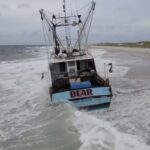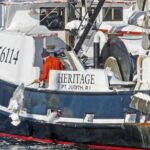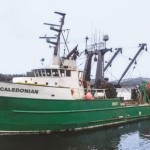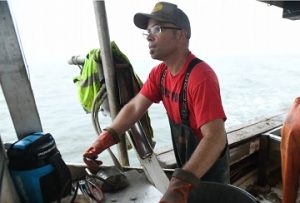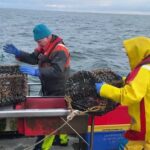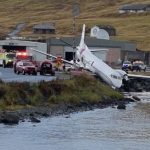Tag Archives: Craig Medred
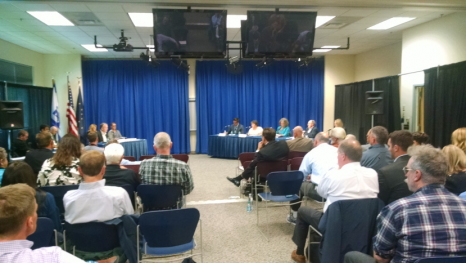
Fish pie – Everyone wants a piece
Representatives of the haves and have-nots of American ocean fisheries gathered in a packed college classroom here on Wednesday to offer Sen. Dan Sullivan, R-Alaska, their ideas on what he could do with the Magnuson-Stevens Fisheries Conservation and Management Act. The now 40-year-old federal fisheries legislation is the legacy of the late and revered Alaska Sen.Ted Stevens.,,, And there is no doubt the MSA has problems when it comes to dealing with recreational fishing. Anglers, charter-boat operators, commercial fishermen and environmental groups are at the moment all in a Gulf of Mexico scrum fighting over red snapper. It is in many ways a tussle that almost makes the long-running fish war in Cook Inlet look tame. click here to read the story 08:25
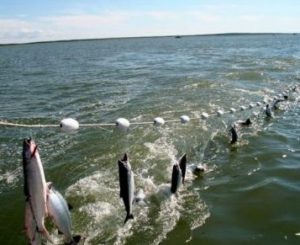
Alaska’s losing battle
Bristol Bay – Alaska’s highest profile salmon fishery – had a banner year, and yet everywhere in the global market Alaska salmon fisheries look to be in more and more trouble over the long-term. A $2 to $3 dollar per pound commodity in the 1980s ($4 to $6 when corrected for inflation)Bristol Bay sockeye is today a $1 per pound commodity, and there is no sign the pricing is going to get much better. It could actually get worse. Chilean farmed salmon production is again on the rise and production costs in South America are falling. “AquaChile lowered costs by 13 percent in the first quarter of 2017, in line with other competitors,” Reuters reported from Santiago in mid-July.,,, Why does it matter? click here to read the story 19:54
Yes, no, maybe
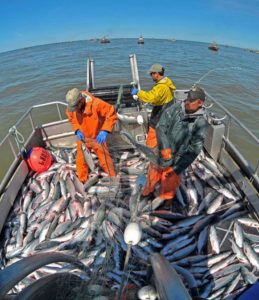 Only days after over-seeing the deaths of nearly 90,000 Upper Cook Inlet coho salmon in two commercial drift gillnet openings in the belief the coho run was late and strong, fishery managers with the Alaska Department of Fish and Game have changed their minds. An emergency order issued Sunday cut commercial fishing time in the northern Inlet in half and restricted drift netters to drift “Area 1” south of Kalgin Island, along with a corridor near the mouth of the Kenai River. The Area 1 restriction pushes the fleet down into the wide, unconstricted part of the Inlet where it is harder to find the fish. click here to read the story 16:57
Only days after over-seeing the deaths of nearly 90,000 Upper Cook Inlet coho salmon in two commercial drift gillnet openings in the belief the coho run was late and strong, fishery managers with the Alaska Department of Fish and Game have changed their minds. An emergency order issued Sunday cut commercial fishing time in the northern Inlet in half and restricted drift netters to drift “Area 1” south of Kalgin Island, along with a corridor near the mouth of the Kenai River. The Area 1 restriction pushes the fleet down into the wide, unconstricted part of the Inlet where it is harder to find the fish. click here to read the story 16:57
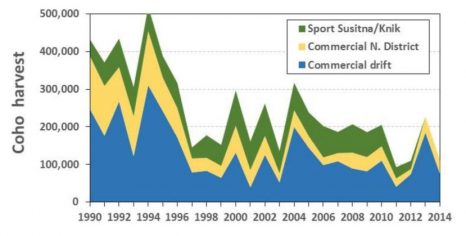
Where are the coho?
The bad news came in triplicate for Little Susitna River guide Andy Couch on Friday. First there was the daily coho salmon enumeration from the Little Su weir. The 39 fish counted the day before brought the season’s total to 679, the lowest count since 2012. August 2012 started with the Alaska Department of Fish and Game announcing that bait fishing – scheduled to open Aug. 6 – would not be allowed. Four days later came the announcement the river would be closed to coho fishing for the rest of the year. When Couch, a longtime Little Su angler and guide saw the Thursday count this year, he knew what to expect next: another bait ban. But before that was announced the commercial catch statistics for a Thursday opening of the Cook Inlet drift gillnet fleet started trickling in. Fish Politics. click here to read the story 15:49

Fish-o-nomics 101
Alaska leads the nation in unemployment, and fish processors in Bristol Bay are complaining they couldn’t find the workers necessary to head, gut and in some cases further process this year’s unexpectedly large bounty of sockeye salmon. Because of this, commercial fishermen were put on limits to avoid plugging processing plants with too many salmon, which left most of them unhappy. “I personally have driven through and away (from) more fish than I’ve ever seen in my life during a legal fishing opener. And that hurts,” fisherman Larry Christensen told reporter Caitlan Tan at KDLG in Dillingham. The public radio station this year live-covered the Bristol Bay fishing season as if it were some sort of sporting event, and there are some similarities. And while fishermen were unhappy with processors, processors were unhappy with the government which they blamed for making it hard to bring in foreign workers to process fish. click here to read the story 08:48
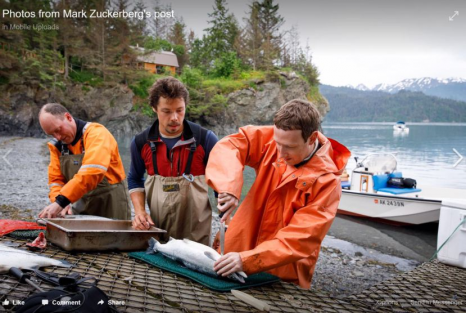
Zuckerberg’s fake news
Seven months ago, Facebook CEO Mark Zuckerberg was voicing plans to combat fake news on the social media website. And this week he’s in Alaska doing what else? Creating fake news. But that all sort of pales compared to coming to Alaska, apparently breaking the law, and providing photographic evidence of the crime to your 92,734,686 followers. Granted, Zuckerberg can surely claim ignorance, given that Alaska fish and game laws are often confusing even to Alaskans. They are particularly confusing when it comes to non-residents and the Alaska practice of dipnetting salmon, ie. scooping them out of the water with a big net. As Zuckerberg duly notes in a post with one of his photos he was “tagging along with locals who were going dip netting. I couldn’t participate since only Alaskans can do subsistence fishing.” Actually, the fishery was a personal-use dipnet fishery, but it looks like a subsistence fishery. Zuckerberg probably just wrote down what those locals told him. Whether they told him exactly what the law allows only he knows. But what the Alaska Department of Fish and Game says is this: click here to read the story 10:10
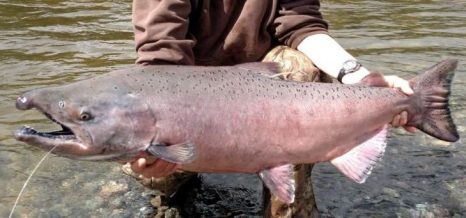
State of the kings
For the first time in years, king salmon are showing signs of making a stronger return to the vast wilderness surrounding Alaska’s urban heartland. While Panhandle runs continue to struggle, kings to the north appear to be coming back in reasonable numbers. No records are being broken, but there are enough fish the Alaska Department of Fish and Game has liberalized fishing in two of the state’s most popular roadside king salmon drainages – the Kenai River south of Anchorage and tributaries to the Copper River east of the state’s largest city. A near disaster had been forecast on the latter river, a big, muddy, glacial stream draining 26,500 square miles of Alaska near the Canadian border. A return of only 29,000 fish was expected, and with the spawning goal set at 24,000, the state imposed a host of restrictions on the fishery before it even began. Sport fishing was closed. Subsistence fishermen were restricted to a seasonal limit of only two Chinook, the more common Lower 48 name for kings. And commercial fishermen faced major reductions in fishing time and closures of areas that have in the past produced the biggest king catches. click here to read the story 09:37
Oil spill spared fish
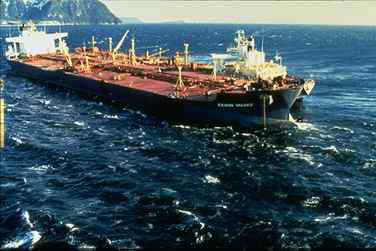 Almost 30 years after the oil tanker Exxon Valdez hit Bligh Reef and smeared Prince William Sound with more than 11 million gallons of Alaska crude oil, a team of state and federal scientists have concluded the spill – as bad as it looked and as much impact as it had on marine mammals and birds – appears to have done no real damage to fisheries. “We found no evidence supporting a negative EVOS (Exxon Valdez Oil Spill) impact on herring, sockeye salmon, or pink salmon productivity, and weak evidence of a slightly positive EVOS signal on Copper River Chinook (king) salmon productivity,” the study says. “It is unclear how EVOS may have impacted Chinook salmon positively.” Somewhat surprisingly, however, the study found two non-oil spill events – one natural and one manmade – that appear to have caused significant changes in Sound fisheries. And one of them, a naturally occurring spill of fresh water, appears to be what crippled herring stocks there. click here to read the story link to the study 20:16
Almost 30 years after the oil tanker Exxon Valdez hit Bligh Reef and smeared Prince William Sound with more than 11 million gallons of Alaska crude oil, a team of state and federal scientists have concluded the spill – as bad as it looked and as much impact as it had on marine mammals and birds – appears to have done no real damage to fisheries. “We found no evidence supporting a negative EVOS (Exxon Valdez Oil Spill) impact on herring, sockeye salmon, or pink salmon productivity, and weak evidence of a slightly positive EVOS signal on Copper River Chinook (king) salmon productivity,” the study says. “It is unclear how EVOS may have impacted Chinook salmon positively.” Somewhat surprisingly, however, the study found two non-oil spill events – one natural and one manmade – that appear to have caused significant changes in Sound fisheries. And one of them, a naturally occurring spill of fresh water, appears to be what crippled herring stocks there. click here to read the story link to the study 20:16
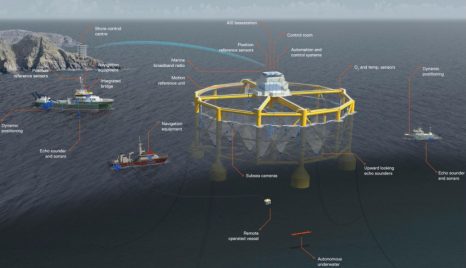
21st Century salmon
As Alaska struggles to maintain commercial productivity in its most-valuable, wild-salmon fisheries, competition in the fish market is looming on every horizon. Land-based salmon farms are popping up in odd places across the U.S., and the Norwegians and the Chinese are teaming to take salmon farming to new heights or, more accurately, new depths offshore. China.org today reported the first delivery of a deepwater, “intelligent offshore farm” to the Norwegian company SalMar ASA. “Ocean Farm 1” is designed to be positioned in water 300 to 600 feet deep where currents can sweep it clean in four dimensions while computers monitor its performance. “It is the world’s first offshore salmon farming equipment built on the same principle as semisubmersible installations used in the offshore oil and gas drilling sector,” the Chinese national website said.,, Open-ocean fish farms have been touted as one path to greening a business sometimes blamed for polluting protected bays and coves with fish waste. click here to read the story 08:38
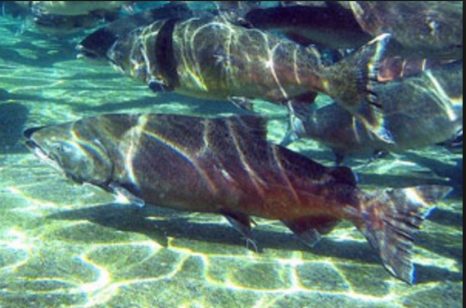
So many kings
With the commercial catch of king salmon off the mouth of the Copper River steadily growing, the Alaska Department of Fish and Game has gone all in on the idea that a preseason forecast that suggested a return of only 29,000 of the big fish was in error. The agency on Friday announced it will lift a restriction that limited subsistence fishermen on the Copper to two fish, and open sport fisheries along the river it had ordered closed before the season even began. The action comes amid mounting public pressure for the agency to see the annual catch of kings, or Chinook as they called elsewhere, is shared among subsistence, commercial, sport and personal-use fishermen. The subsistence fishermen, who are supposed to have a legal priority on harvest, started the season limited to two fish, and told they would get only one-fifth slice of an allowable harvest of only 5,000 kings. That whole plan has now been ditched. click here to read the story 10:37
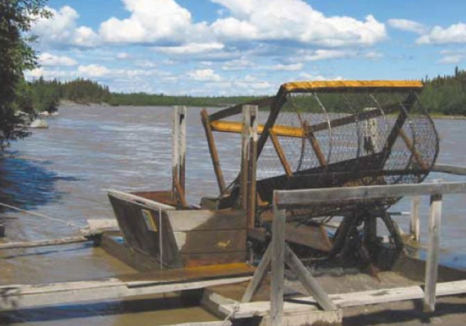
Good bad news?
The Copper River commercial salmon fishery ended Tuesday almost 2,000 Chinook over the 5,000-salmon threshold the Alaska Department of Fish and Game set as the acceptable harvest for 2017, and the fishing season has only begun. Steve Moffitt was at the time reported to be hiking somewhere along the Appalachian Trail on the East Coast of North America some 4,500 miles southeast of the tiny port, community of Cordova on the West Coast not far from the mouth of the Copper. Who the hell is Steve Moffitt? He’s the commercial fisheries biologist who penned a bombshell forecast calling for the return of but 29,000 king salmon, as Alaskans most often call Chinook, to the Copper River this year. He then promptly retired, leaving behind what has now become Alaska’s most watched fishery for a number of reasons: click here to read the story 19:50
King fishery closed
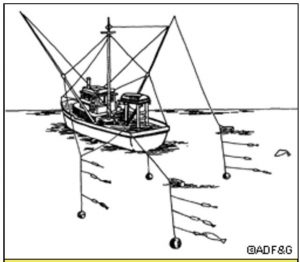 Fisheries managers in Southcentral Alaska might still be wrestling with what to do about a weak return of king salmon to the Copper River, but their counterparts in Southeast Alaska have acted to protect kings returning to the Taku and Stikine Rivers. Officials with the Alaska Department of Fish and Game today announced commercial troll fisheries which catch most of the Southeast kings, or Chinook as they are otherwise called will close at midnight Sunday. Preseason forecasts for wild Chinook salmon production in Southeast Alaska are at an all-time low, a press release said. Typically, in the Taku and Stikine rivers, nearly half the run has entered the river by the end of the third week of May; however, record low numbers of Chinook salmon are being seen in-river this year. The Taku and Stikine are transboundary rivers, and Fish and Game runs research programs with the Department of Fisheries and Oceans Canada to assess in-season run strength. Click here to read the story 13:13
Fisheries managers in Southcentral Alaska might still be wrestling with what to do about a weak return of king salmon to the Copper River, but their counterparts in Southeast Alaska have acted to protect kings returning to the Taku and Stikine Rivers. Officials with the Alaska Department of Fish and Game today announced commercial troll fisheries which catch most of the Southeast kings, or Chinook as they are otherwise called will close at midnight Sunday. Preseason forecasts for wild Chinook salmon production in Southeast Alaska are at an all-time low, a press release said. Typically, in the Taku and Stikine rivers, nearly half the run has entered the river by the end of the third week of May; however, record low numbers of Chinook salmon are being seen in-river this year. The Taku and Stikine are transboundary rivers, and Fish and Game runs research programs with the Department of Fisheries and Oceans Canada to assess in-season run strength. Click here to read the story 13:13
Golden fish
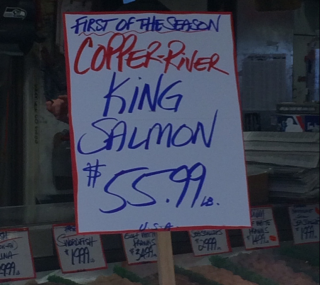 Update: This story was updated on May 21, 2017 to include new prices. In economic crisis, there is often opportunity. Commercial fishermen in Cordova, Alaska are at the moment worrying mightily about what the rest of their fishing season will bring given the prediction of a record weak-return of Copper River king season. But what the ocean gods have brought so far are sky-high prices for a higher than expected catch of a thought-to-be struggling run of fish. The first, 12-hour opening of the season was expected to result in the harvest of only a few hundred kings given a prediction of a weak return and fishing-area closures the Alaska Department of Fish and Game ordered to protect areas where kings have usually been caught in the past. Despite those closures, however, fishermen caught almost 1,900 of the big fish, a catch bigger than in last year’s opener. Most fishermen in the Cordova fleet of 500 gillnetters were reported to be getting dock prices of $10.30 per pound for king, but some were doing much better. click here to read the story 18:20
Update: This story was updated on May 21, 2017 to include new prices. In economic crisis, there is often opportunity. Commercial fishermen in Cordova, Alaska are at the moment worrying mightily about what the rest of their fishing season will bring given the prediction of a record weak-return of Copper River king season. But what the ocean gods have brought so far are sky-high prices for a higher than expected catch of a thought-to-be struggling run of fish. The first, 12-hour opening of the season was expected to result in the harvest of only a few hundred kings given a prediction of a weak return and fishing-area closures the Alaska Department of Fish and Game ordered to protect areas where kings have usually been caught in the past. Despite those closures, however, fishermen caught almost 1,900 of the big fish, a catch bigger than in last year’s opener. Most fishermen in the Cordova fleet of 500 gillnetters were reported to be getting dock prices of $10.30 per pound for king, but some were doing much better. click here to read the story 18:20
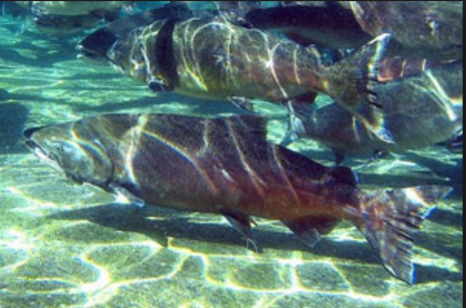
Copper River disaster
This is a developing story – No one seems to have any idea what sort of astronomical price a rare and iconic Copper River king salmon from Alaska might demand when the commercial fishing season opens in about a week – if there are any fish to be sold. The Alaska Board of Fisheries is facing an emergency petition to ban the sale of the big fish in the name of conservation. Alaska subsistence fishermen who are supposed to have a fishing priority but have already been told they will be restricted to a limit of two kings each for the entire season are talking about the possibility of a lawsuit if the state allows the commercial king fishery to open. And even if the start of the fishery proceeds as scheduled on May 18, the opening day catch is expected to be no more than a few hundred fish, if that, given that the Alaska Department of Fish and Game has already ordered the closure of fishing areas where most kings are caught. click here to read the article. 09:45
Fish Politics – Victim of the state
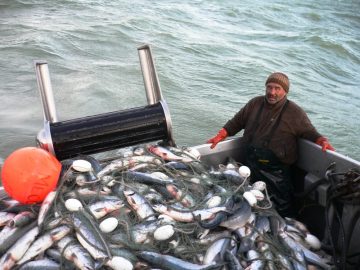 Once revered for world-leading skills at managing wild salmon, the Alaska Department of Fish and Game today finds itself under attack as incompetent as the North Pacific Fisheries Management Council begins court-ordered consideration of salmon management in the federal waters of Cook Inlet. The most powerful commercial fishing organization in the 49th state’s most populated region says its members have been robbed of $33 million over the past six years thanks to state mismanagement of salmon, and they want the federal government to make things right. The United Cook Inlet Drift Association forced the management issue into federal court hoping to get its nets around more salmon. It now accuses Fish and Game’s Commercial Fisheries Division of grossly mismanaging runs bound for the Kenai, Kasilof and Susitna rivers for years.,,The state rebuilt them to record levels, but along the way the politics of fish changed. click here to continue this Big Read 10:55
Once revered for world-leading skills at managing wild salmon, the Alaska Department of Fish and Game today finds itself under attack as incompetent as the North Pacific Fisheries Management Council begins court-ordered consideration of salmon management in the federal waters of Cook Inlet. The most powerful commercial fishing organization in the 49th state’s most populated region says its members have been robbed of $33 million over the past six years thanks to state mismanagement of salmon, and they want the federal government to make things right. The United Cook Inlet Drift Association forced the management issue into federal court hoping to get its nets around more salmon. It now accuses Fish and Game’s Commercial Fisheries Division of grossly mismanaging runs bound for the Kenai, Kasilof and Susitna rivers for years.,,The state rebuilt them to record levels, but along the way the politics of fish changed. click here to continue this Big Read 10:55
Fishy-nomics
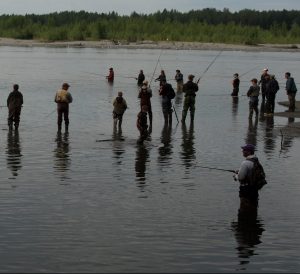 As a blunt reminder of the value of salmon to all Alaskans, businessmen and women from the Matanuska-Susitna Borough paraded before the Alaska Board of Fisheries on Saturday to talk business. Money and jobs have always been the rallying cries of commercial fishermen who catch the majority of salmon that make their way into Cook Inlet, the long fiord at the front door of Anchorage. And government, both state and federal, has long been receptive to their financial pleas. When weak king salmon runs in 2012 forced restrictions that put Kenai Peninsula commercial fishermen on the beach, then Gov. Sean Parnell asked for a federal disaster declaration. When it came, the Peninsula Clarion reported, “an estimated 443 permit holders from Cook Inlet’s eastside setnet fishery” vied for $4.6 million in aid. No government entity, however, has jumped in to bail out Mike Hudson, the owner of 3 Rivers Fly & Tackle in Wasilla, even though his business has in recent years been devastated by weak salmon returns linked in part to how Inlet salmon are managed. continue reading the article here 09:40
As a blunt reminder of the value of salmon to all Alaskans, businessmen and women from the Matanuska-Susitna Borough paraded before the Alaska Board of Fisheries on Saturday to talk business. Money and jobs have always been the rallying cries of commercial fishermen who catch the majority of salmon that make their way into Cook Inlet, the long fiord at the front door of Anchorage. And government, both state and federal, has long been receptive to their financial pleas. When weak king salmon runs in 2012 forced restrictions that put Kenai Peninsula commercial fishermen on the beach, then Gov. Sean Parnell asked for a federal disaster declaration. When it came, the Peninsula Clarion reported, “an estimated 443 permit holders from Cook Inlet’s eastside setnet fishery” vied for $4.6 million in aid. No government entity, however, has jumped in to bail out Mike Hudson, the owner of 3 Rivers Fly & Tackle in Wasilla, even though his business has in recent years been devastated by weak salmon returns linked in part to how Inlet salmon are managed. continue reading the article here 09:40
Fish war on?
 After the smallest Kenai River dipnet catch in eight years, there are hints that the little people of Alaska’s urban core might at last be arriving at the realization that they are the only ones who can protect their interest in Alaska salmon for dinner. A message populating on social media over the weekend was calling dipnetters to a “meeting at Cabela’s, Anchorage sunday evening from 6 to 7 concerning dipnetting and BOF. Pass it on.” BOF is the acronym for the Board of Fisheries for the state of Alaska. It is the entity that sets seasons and catch limits for commercial, sport and personal-use fisheries around the state. It will later this month take up the issue of management of Cook Inlet salmon, an always contentious matter in which the interests of average Alaskan fishermen and women have historically proven secondary. To a large degree, fishery managers with the Alaska Department of Fish and Game say, this is simply unavoidable. Commercial fishermen working offshore in the Inlet get the first crack at returning salmon, and the commercial fishery is the big dog in the management scheme. Salmon managers use it to regulate the numbers of salmon getting into streams all around the region with the intent being to maximize the catch while still meeting spawning goals. Continue reading the article here 09:06
After the smallest Kenai River dipnet catch in eight years, there are hints that the little people of Alaska’s urban core might at last be arriving at the realization that they are the only ones who can protect their interest in Alaska salmon for dinner. A message populating on social media over the weekend was calling dipnetters to a “meeting at Cabela’s, Anchorage sunday evening from 6 to 7 concerning dipnetting and BOF. Pass it on.” BOF is the acronym for the Board of Fisheries for the state of Alaska. It is the entity that sets seasons and catch limits for commercial, sport and personal-use fisheries around the state. It will later this month take up the issue of management of Cook Inlet salmon, an always contentious matter in which the interests of average Alaskan fishermen and women have historically proven secondary. To a large degree, fishery managers with the Alaska Department of Fish and Game say, this is simply unavoidable. Commercial fishermen working offshore in the Inlet get the first crack at returning salmon, and the commercial fishery is the big dog in the management scheme. Salmon managers use it to regulate the numbers of salmon getting into streams all around the region with the intent being to maximize the catch while still meeting spawning goals. Continue reading the article here 09:06
Craig Medred: Fish fight end?
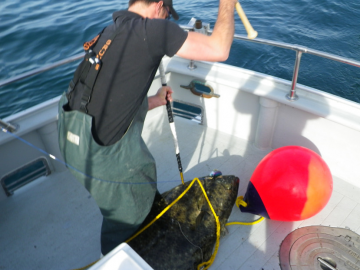 The North Pacific Fisheries Council has taken an unprecedented step to try to increase the value of halibut to the Alaska economy by allowing a yet-to-be-created, charter-boat fishing entity to buy fish from willing commercial fishing interests in order to boost sport harvests. Efforts to shift some of the halibut harvest back toward tourism businesses comes in the wake of a study indicating that “individual fishery quotas” created for the commercial halibut fishery in the early 1990s have not worked out quite as planned. A well-intentioned idea, IFQs (Eye-F-Cues) as everyone in the fishing industry calls them, were intended to shift halibut harvests away from big-boat operations toward individual fishermen working as owner-operators of fishing businesses hopefully based in Alaska. But that isn’t exactly how things turned out. Read the rest of the story here 10:58
The North Pacific Fisheries Council has taken an unprecedented step to try to increase the value of halibut to the Alaska economy by allowing a yet-to-be-created, charter-boat fishing entity to buy fish from willing commercial fishing interests in order to boost sport harvests. Efforts to shift some of the halibut harvest back toward tourism businesses comes in the wake of a study indicating that “individual fishery quotas” created for the commercial halibut fishery in the early 1990s have not worked out quite as planned. A well-intentioned idea, IFQs (Eye-F-Cues) as everyone in the fishing industry calls them, were intended to shift halibut harvests away from big-boat operations toward individual fishermen working as owner-operators of fishing businesses hopefully based in Alaska. But that isn’t exactly how things turned out. Read the rest of the story here 10:58
Alaska dipnetting – Disorderly and unsafe
 The winter meeting of the Alaska Board of Fisheries is months away but already the weirdness has begun. At a work session in Kenai-Soldotna this week, the board spent some time kicking around the idea of motor restrictions for the Kenai River to make the popular, personal-use dipnet fishery there safer. The suggestion was brought to the board by 72-year-old Soldotna resident George Parks and picked up by the board’s new vice-chair Sue Jeffery, who termed the Kenai a “disorderly, unsafe fishery.” A commercial fisherman from Kodiak, Jeffery appeared unaware everyone was discussing the wrong fishery. There are deadly dipnet fisheries in Alaska, but the Kenai boat fishery is not one of them. The short stretch of the Kenai open to dipnetting from boats during the short July dipnet seasons does get congested. Some boats have collided, and a few have even taken on water until they sank. But no one has ever died. Read the story here 14:38
The winter meeting of the Alaska Board of Fisheries is months away but already the weirdness has begun. At a work session in Kenai-Soldotna this week, the board spent some time kicking around the idea of motor restrictions for the Kenai River to make the popular, personal-use dipnet fishery there safer. The suggestion was brought to the board by 72-year-old Soldotna resident George Parks and picked up by the board’s new vice-chair Sue Jeffery, who termed the Kenai a “disorderly, unsafe fishery.” A commercial fisherman from Kodiak, Jeffery appeared unaware everyone was discussing the wrong fishery. There are deadly dipnet fisheries in Alaska, but the Kenai boat fishery is not one of them. The short stretch of the Kenai open to dipnetting from boats during the short July dipnet seasons does get congested. Some boats have collided, and a few have even taken on water until they sank. But no one has ever died. Read the story here 14:38
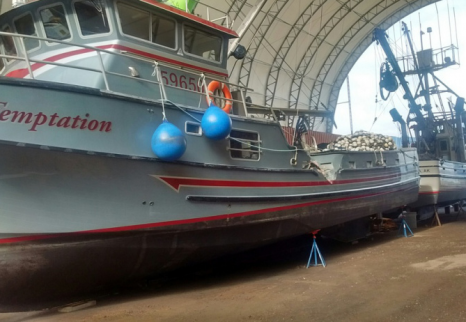
A real fish war – not just another Alaska yelling match
A real fish war – not just another Alaska yelling matching about who gets to catch what – was waged in Prince William Sound this August with one boat nearly sunk, one crewman seriously injured, and the Alaska Department of Law now pondering whether to file assault or other charges. The weapons of choice in the case? 58-foot salmon seiners. The alleged aggressor? One-time state ski racer Kami Cabana from Girwood. She was at the controls of the F/V Chugach Pearl when it t-boned the F/V Temptation. “I got really lucky when she hit me,” Temptation skipper Jason Long said in a telephone interview with craigmedred.news this week. There were davits fastened to the side of the Temptation where the Pearl struck amidships. They absorbed some of the impact of the ramming. Had the Pearl hit just a little farther aft, Long said, it could have ruptured the Temptations fish hold and put his ship in serious danger. Had the Pearl hit just a little farther forward, it would have smashed the Temptation’s cabin. Long said he wanted at first to think the collision an accident, but Cabana’s behavior afterward – with a Temptation crewman down on the deck and bleeding profusely – argued otherwise. Read the full story here 09:51
Fish Board imposter?
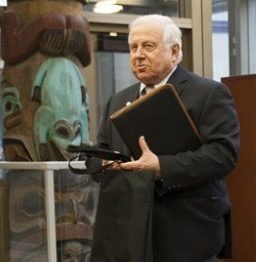 A former member of the Alaska Board of Fisheries facing multiple felony charges of lying about his Alaska residency to collect Permanent Fund Dividends is suggesting he might have fallen victim to an virtual imposter. The claim comes in a 19-page brief filed for Roland Maw of Kasilof in which his attorney seeks to quash the Maw indictments. Attorney Nicholas Polasky of Juneau argues that a grand jury indicted Maw without any evidence that Maw was the man actually sitting at a keyboard making online reservations to travel out-of-state and purchase resident hunting and fishing licenses in Montana. “Mr. Maw does not necessarily assert that he is not the person who made the statements or engaged in the conduct that is represented in every single exhibit,” Polasky wrote. “However, Mr Maw does not agree that he is the person who made the statements or engaged in the conduct in some of the exhibits.” For that reason, Polasky wants most of the exhibits in the Maw case tossed and the indictment along with them. His request does reveal for the first time the extensive file the state has put together on Maw, the one-time director of the United Cook Inlet Drift Association. UCIDA is the most powerful commercial fishing organization in Cook Inlet. Read the story here 13:06
A former member of the Alaska Board of Fisheries facing multiple felony charges of lying about his Alaska residency to collect Permanent Fund Dividends is suggesting he might have fallen victim to an virtual imposter. The claim comes in a 19-page brief filed for Roland Maw of Kasilof in which his attorney seeks to quash the Maw indictments. Attorney Nicholas Polasky of Juneau argues that a grand jury indicted Maw without any evidence that Maw was the man actually sitting at a keyboard making online reservations to travel out-of-state and purchase resident hunting and fishing licenses in Montana. “Mr. Maw does not necessarily assert that he is not the person who made the statements or engaged in the conduct that is represented in every single exhibit,” Polasky wrote. “However, Mr Maw does not agree that he is the person who made the statements or engaged in the conduct in some of the exhibits.” For that reason, Polasky wants most of the exhibits in the Maw case tossed and the indictment along with them. His request does reveal for the first time the extensive file the state has put together on Maw, the one-time director of the United Cook Inlet Drift Association. UCIDA is the most powerful commercial fishing organization in Cook Inlet. Read the story here 13:06
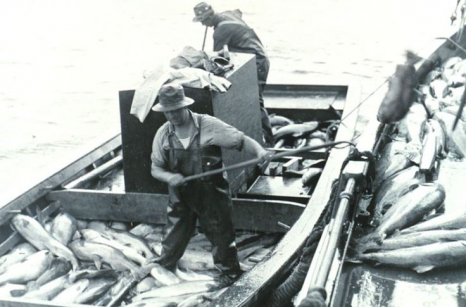
Netting Alaska’s spoils – Craig Medred
Fifty years ago with runs of most Cook Inlet salmon failing, every fisherman – commercial, subsistence and sport – paid the price of conservation. But once the runs were rebuilt in the 1980s, commercial fishermen working the waters at the doorstop of Alaska’s urban core reaped nearly all the benefits. And average Alaskans kept paying conservation costs imposed by restrictive fishing regulations dating back to the 1950s. This is one unavoidable conclusion stemming from weeks of research into “Alaska’s greatest gift,” a four-part series detailing the history of Cook Inlet fishing since just before Statehood on through the creation of limited entry and the state’s fisheries rehabilitation and enhancement program to the current day. Read the rest here 14:29
Read Pt.1 Fishing, a very special business. Click here Read Pt.2 the fall and rise of Alaska fisheries. Click here Read Pt.3 Carving up the pie Click here
Did Alaska Fish Board appointee really discover an endangered species?
 Kenai Peninsula fisherman Roland Maw, Alaska Gov. Bill Walker’s controversial appointee to the Alaska Board of Fisheries, claims in his resume to have been responsible for a significant scientific achievement, the first identification of a new, endangered species in North America. Maw was unable to direct Alaska Dispatch News (Medred) to any such reference, however, and an independent search could find none. Read the rest here 11:19
Kenai Peninsula fisherman Roland Maw, Alaska Gov. Bill Walker’s controversial appointee to the Alaska Board of Fisheries, claims in his resume to have been responsible for a significant scientific achievement, the first identification of a new, endangered species in North America. Maw was unable to direct Alaska Dispatch News (Medred) to any such reference, however, and an independent search could find none. Read the rest here 11:19
Medred fell overboard accusing commercial fishermen of not contributing
 Craig Medred’s Dec. 30, 2014, opinion piece “Oil pays the way while extraction giants like fishing and mining skate” was just more of the deceptive bravado and vindictive rhetoric that appears to be his trademark. I can easily buy into Medred’s first few paragraphs pointing out that Alaskans have not let wisdom get in the way of mitigating inevitable declining oil revenues, but the apples vs. oranges comparison of tax rates, royalties and revenues scapegoat commercial fishing in particular and obscure economic realities while further politicizing complex issues. Read the rest here 09:52
Craig Medred’s Dec. 30, 2014, opinion piece “Oil pays the way while extraction giants like fishing and mining skate” was just more of the deceptive bravado and vindictive rhetoric that appears to be his trademark. I can easily buy into Medred’s first few paragraphs pointing out that Alaskans have not let wisdom get in the way of mitigating inevitable declining oil revenues, but the apples vs. oranges comparison of tax rates, royalties and revenues scapegoat commercial fishing in particular and obscure economic realities while further politicizing complex issues. Read the rest here 09:52
Fish wars obscure need to manage for max economic yield
 KENAI RIVER — On the very day Arni Thomson, a spokesman for commercial fishing interests in Cook Inlet, complained in ADN that the salmon resource is being used “as a platform for division,’’ the F/V Peregrine was cutting in close to the north bank of this river at the ideal speed to send a rolling wave of wake washing over dipnetters along that shore. Talk about creating division …Yes Craig, read the comments. Read more here 09:25
KENAI RIVER — On the very day Arni Thomson, a spokesman for commercial fishing interests in Cook Inlet, complained in ADN that the salmon resource is being used “as a platform for division,’’ the F/V Peregrine was cutting in close to the north bank of this river at the ideal speed to send a rolling wave of wake washing over dipnetters along that shore. Talk about creating division …Yes Craig, read the comments. Read more here 09:25




































